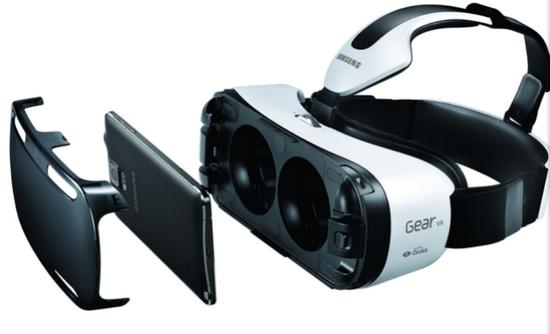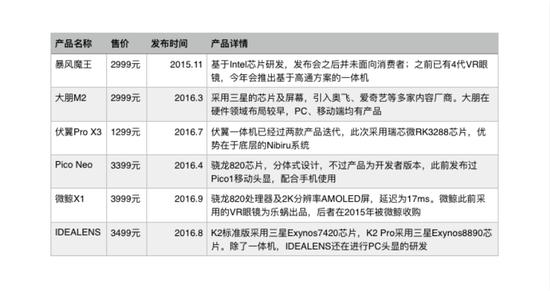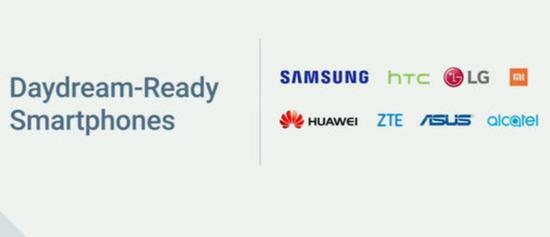The world's most famous VR vendors released their products one after another. The "VR year" has finally been implemented. However, after a long time, “VR Winter†has become a hot topic in the venture capital circle. It seems that there are only a few months in between. It is undeniable that, for various reasons, the VR industry is no longer as glamorous as it used to be. Capital inflows have been too fierce before, but in the short term, seeing no return will allow them to move quickly to a conservative stage.

According to CB Insights, the number of global VR investments peaked in Q4 in 2015, but data in the first two quarters of this year has been declining.
The length of the VR industry chain can include many links. The reason for the outbreak is that the technology has reached an imaginative stage. At the same time, several investment cases in the US have allowed Chinese entrepreneurs to see a new turning point in the industry. advent.
It is true that VR is at the earliest stage of the industry. Every time it experiences a specific period, there will be new opportunities to replace the previous products. In the wave, the mobile VR headset has already begun to die.
Business Startup Caused by Cardboard
In 2014, Google I/O Conference released its virtual egg--a cardboard box. After the paper box was opened, people in the stadium were all amazed. This is a VR glasses. After inserting the mobile phone, it can be fully immersed. Style effect.
A piece of cardboard, two convex lenses, a strap, so low cost can achieve good results, and basically no threshold, which also aroused the curiosity of the global VR enthusiasts, but also aroused the interest of entrepreneurs. Three months later, the storm on the other side of the ocean released a storm mirror generation product, conceptually citing virtual reality, but in reality, the generation of storm mirrors and the subsequent generations of products have followed Cardboard’s thinking. The cardboard was upgraded to plastic, and the sponge was added around the lens to make it more comfortable to wear. In a word, the process is further improved but there is no practical innovation.

Since then, a large number of startup companies have entered the hardware sector. Due to the advantages of China's supply chain, the solution cost has been gradually reduced, and the concept of VR has been pushed into the market. Consumers have limited awareness of virtual reality and are easily misunderstood as VR=Cardboard devices. .
The drawbacks of mobile VR
As the threshold of mobile phone boxes is low, the VR concept is becoming more and more sophisticated, and its defects are exposed step by step. As we all know, the Oculus, HTC, and PSVR heads need to connect high-performance PCs or game consoles to support the operation of multiple sensors inside the PC helmet. The performance of mobile phones is insufficient to support the development of mobile VR at this stage. Taking Gear VR as an example, Samsung has made great efforts on this head-mounted display: integrated additional sensors, and the side of the helmet is added to the touch area for convenient operation; The software part that cooperates with Oculus, cooperates with Samsung mobile screen, picture precision, delay and operating system all become the leader of mobile VR sector.
However, most third-party mobile VR manufacturers in China do not have the ability to be compatible with mobile phones. The configuration of mobile phones is not satisfactory. From the mobile screen resolution, refresh rate and delay data, Gear VR is far ahead.

In this year's Jingdong 618 event, Jingdong disclosed an interesting data: The sales volume of VR glasses increased by 23498.21%, which is the largest increase in the overall sales of 3C in Jingdong Mall. At the same time, users in the second and third tier cities have experienced rapid growth. However, the situation reflected by this data may not be optimistic. The official information given by JD.com shows that some VR glasses produced by Shenzhen Parts Factory sell more in third-party stores, and the VR concept of initial contact with consumers is not good. It is likely to cause mistrust and loss.
Therefore, the phenomenon that “VR glasses have not been picked up after being used for several times†has become an indisputable fact in the industry. If you want to change this situation, you must solve problems such as dizziness (refresh rate), blurring (resolution), and interaction. From the point of view of the existing mobile phone configuration, it is far from satisfying people's demand for VR.
On the other hand, from the rise of VR helmets, we are looking forward to a "killer" application. However, in the past two years, there is still no game that experiences great "screaming" games. Seen as the most widely used area of ​​VR. VR games on Steam have not been widely disseminated so far, PC games are still the case, most mobile VR games or Demo level 3D viewing.
“The most used application is Tilt Brush, and the best experience is on HTC Vive.†Depth VR founder & CEO Li Jin mentioned to the cloud network. Depth VR has been engaged in two years of VR helmet research and development, and Meizu has cooperated with a mobile VR glasses "style." However, since last year, the company has transformed into a positioning system and provided solutions.
Although mobile VR headsets are currently the largest shipments, such startups have also shown signs of decline. Li Jin revealed to Huhunyun.com that unlike the crazy phenomenon in the market, the mobile phone box actually has "limited sales." In the end, the sales of VR hardware will gather on giants, such as the upcoming PSVR with content expected by many people.
On the other hand, capital also began to integrate such startup companies. SVR Glasses, which was developed and manufactured by Le Cordial VR, is also a mobile phone box. In 2015, it was acquired by the micro whale VR. Le Yun CEO Xu Xian became the technical leader of the micro whale VR. Before the appearance of the micro-whale, the micro-whale's mobile VR device technology was provided by Le Yun.
The attitude of the capital market towards pure VR glasses has become increasingly cold, so this year's hardware manufacturers have found new selling points: VR-one. Even some vendors see the opportunity of the all-in-one machine, skipping the concept of VR glasses and directly introducing the all-in-one device. From the perspective of this year's situation, the all-in-one machine has become a new growth point in the VR industry. Qualcomm, Samsung, intel and other large supply chain manufacturers have taken actions, and they can feed a wave of domestic startup companies. The VR-one will be in a melee situation, like 15 years of VR glasses.

Some of the all-in-one device manufacturers, some of which have come from the transformation of VR glasses
The future development of mobile VR
In this environment, whether there is still a chance to move VR? Hunting cloud network believes that the current mobile VR opportunities are concentrated in two branches, mobile phone manufacturers and one machine.
Obviously, there is no unified standard for mobile phone boxes nowadays, but this situation will soon be broken: After Google's Day Dream platform is introduced, global standards will once again be unified. By then, VR hardware companies that cannot turn around will be overwhelmed. We can see that Chinese mobile phone manufacturers such as ZTE, Huawei, and Xiaomi have already confirmed or are very likely to be compatible with Day Dream, and the development of mobile VR will surely go through this stage of mobile phone. Mobile phone manufacturers are the biggest beneficiaries.

The Samsung Gear VR mentioned above is the most typical example. Gear VR is only suitable for the Samsung series flagship mobile phones, the best experience. Xiaomi's recently released VR glasses toy version also achieved initial results: 300,000 sold in 20 days.
Yunhun.com predicts that at the mobile VR glasses level, mobile phone manufacturers must be the future leaders, and will not be as fierce as the existing smart phone market. Of course, it is not ruled out that third-party hardware companies are in an equal position with mobile phone manufacturers.
The existence of the all-in-one machine in the field of VR is rather special. It can be said to be a product with "socialist characteristics."
Betting machine?
Looking at the three big display devices, only focusing on building PCs and hosting VR ecosystems, Google’s daydream clearly targets betting on smartphones, and combining mobile phones and VR glasses does not appear in the above-mentioned companies. Strategy.
Then the concept of one machine became popular in China, and many manufacturers willing to continue to invest in hardware development have transformed from low-end mobile phone boxes into one-piece devices. Of course, there are also quite a few people who believe that the value of the all-in-one machine is, and Qualcomm is one of the leaders. Pico and the microwhale all-in-ones have adopted Qualcomm's solutions. In early September, Qualcomm also launched a virtual reality reference design platform in conjunction with Goerth Acoustics to further standardize the all-in-one.

Qualcomm release 820 VR all-in-one reference design
In April of this year, Samsung officials stated that the VR all-in-one is under development. However, the exact time is still not certain. As the best-known Gear VR for mobile experience, it is not surprising that its second-generation product has become an all-in-one machine. After all, it can expand the user base - Gear VR only supports Samsung mobile phones, and one machine can save Go to these troubles.
What entrepreneurs can do
From cheap mobile phone boxes to higher-end all-in-one machines, entrepreneurs may also gradually realize the pressures of capital, supply chain, and technology. It is not time for speculation. What can newcomers or companies wishing to make a transition contribute to the VR industry?
As mentioned above, the VR industry chain is very long, and there are several company layouts in any link in the middle. VR glasses are no longer a gusto, proving that the market is maturing.
VR machine
Although Qualcomm offers a cheaper solution, it does not mean that the all-in-one has the same low threshold as VR glasses. Hardware manufacturing consumes a lot of energy and money. It can be predicted that in the future, it will also turn to companies with strong technical strength or sufficient capital.
Panoramic shooting equipment
Panoramic photography devices are another area where VR hardware makers prefer, in addition to all-in-one devices. Several cameras or sports cameras add screen stitching algorithms, and in the absence of content, content makers are launched in due course, and VR cameras “seem beautifulâ€. However, the problem is that on the one hand, international giants have tested the waters in areas such as Nikon and Nokia. On the other hand, at present, we still trust PGC content production. NextVR's Red Dragon Camera and Facebook's VR Camera are both high cost and professional equipment. Only suitable for professional production.
Human-computer interaction
Current VR has limited interaction modes such as remote control, handle, gesture recognition, eye tracking, and so on. But now there is no perfect way to solve this pain point. It is worth mentioning that the interactive model is basically qualitative, and the direction is just that the verification technology is mature and it is difficult to innovate in it.
Any link
If a team owns core technology and can be used in VR, then it does not need to cover the whole chain, focus on a certain link in the chain, and develop software/hardware. Depth VR is a good example of a transition from headshot to positioning system. There are many details in the VR industry chain, and each step requires a mature technology foundation.
Industry application
The international giants are biased toward technology-driven, while China's advantage lies in the broad application of the industry. Therefore, industry applications apply to Chinese entrepreneurs. Driven by "VR + industry" such as content, education, and medical care, it will continue to iterate products as technology matures.
Conclusion
Zhushahu, a venture capitalist at Jinsha River, publicly stated that the current penetration rate of VR/AR is less than 1%, and any industry penetration rate of 20% can be regarded as a more mature development.
"For VCs, we see that the penetration rate can be started after 15%. For entrepreneurs, at least 5% to 10% of entrepreneurs will have the opportunity. Today, 1% has not arrived yet. This time is indeed a bit early. Zhu Xiaohu said.
The industry with a penetration rate of less than 1% has been exaggerated as a “spiritâ€, which shows that the situation of VR in China is rapidly declining. Rather than being ripened, it is better to say that the current lack of technology can not satisfy people's good imagination or practical needs.
Oculus Rift has gone through four years and two developer versions have been released; HTC Vive's National Banking Edition sells for 6,888 yuan and its sales volume does not exceed 100,000 units. After several generations of updates, Gear VR is priced at US$99. Similar situations all indicate that VR is not enough to control costs at the level of mass consumption and will forcefully push forward, and it will only backfire.
Cheap VR glasses are no longer the markets that entrepreneurs flock to. It is a good thing for the VR industry.
JZW-I Catenary Integrated Operation
Jzw-I Catenary Integrated Operation,Automotive Integrated Operation Vehicle,Custom Integrated Operation Vehicle,Multifunction Integrated Operation Vehicle
CRRC SHANDONG CO., LTD. , https://www.crrcsd.com